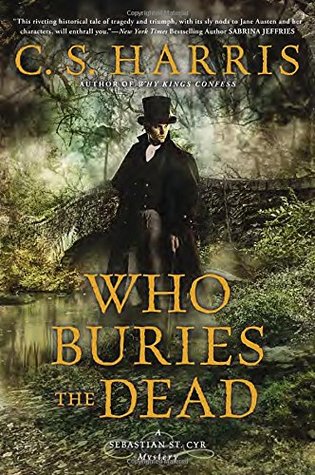 Who Buries the Dead (Sebastian St. Cyr #10) by C.S. Harris
Who Buries the Dead (Sebastian St. Cyr #10) by C.S. Harris Format: ebook
Source: purchased from Amazon
Formats available: hardcover, paperback, ebook, audiobook
Genres: historical fiction, historical mystery, mystery
Series: Sebastian St. Cyr #10
Pages: 338
Published by Berkley on March 3, 2015
Purchasing Info: Author's Website, Publisher's Website, Amazon, Barnes & Noble, Kobo, Bookshop.org, Better World Books
Goodreads
The grisly murder of a West Indies slave owner and the reappearance of a dangerous enemy from Sebastian St. Cyr’s past combine to put C. S. Harris’s “troubled but compelling antihero” (Booklist) to the ultimate test in this taut, thrilling mystery.
London, 1813. The vicious decapitation of Stanley Preston, a wealthy, socially ambitious plantation owner, at Bloody Bridge draws Sebastian St. Cyr, Viscount Devlin, into a macabre and increasingly perilous investigation. The discovery near the body of an aged lead coffin strap bearing the inscription “King Charles, 1648” suggests a link between this killing and the beheading of the deposed seventeenth-century Stuart monarch. Equally troubling, the victim’s kinship to the current Home Secretary draws the notice of Sebastian’s powerful father-in-law, Lord Jarvis, who will exploit any means to pursue his own clandestine ends.
Working in concert with his fiercely independent wife, Hero, Sebastian finds his inquiries taking him from the wretched back alleys of Fish Street Hill to the glittering ballrooms of Mayfair as he amasses a list of suspects who range from an eccentric Chelsea curiosity collector to the brother of an unassuming but brilliantly observant spinster named Jane Austen.
But as one brutal murder follows another, it is the connection between the victims and ruthless former army officer Sinclair, Lord Oliphant, that dramatically raises the stakes. Once, Oliphant nearly destroyed Sebastian in a horrific wartime act of carnage and betrayal. Now the vindictive former colonel might well pose a threat not only to Sebastian but to everything—and everyone—Sebastian holds most dear.
My Review:
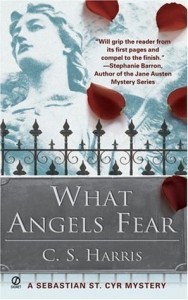 Whenever I flail around looking for a comfort read, I end up back in Regency England, following Sebastian St. Cyr, Viscount Devlin, as he investigates yet another murder that touches upon the high and mighty of his time and place – whether the high and mighty like it or not.
Whenever I flail around looking for a comfort read, I end up back in Regency England, following Sebastian St. Cyr, Viscount Devlin, as he investigates yet another murder that touches upon the high and mighty of his time and place – whether the high and mighty like it or not.
Especially, and sometimes just a bit gleefully, whether his powerful father-in-law, Lord Charles Jarvis, likes it or not. Devlin enjoys discomfiting his father-in-law, while Jarvis would just as soon see Devlin dead, and is more than capable of arranging it. The only thing keeping the two men from killing each other is that they both love Hero Jarvis, Lord Jarvis’ daughter who is, much to the consternation of her father, Devlin’s wife.
The case in this 10th outing of the series begins with a murder. Not just the usual garden-variety murder, either. Stanley Preston, a man who loved collecting memorabilia related to the famously dead, is found not merely dead but decapitated much like the late King Charles I. Or, to be a bit more accurate, like Oliver Cromwell, whose body was decapitated after death – and whose head is part of Preston’s ‘cabinet of curiosities’.
The late, mostly unlamented Mr. Preston was one of those people who are so cantankerous and so outspoken about all the many and varied things they are cantankerous about that it’s not hard to imagine that someone killed him. In fact, it’s all too easy and potential suspects are legion.
Or would be if not for that grisly, gruesome and downright difficult to accomplish decapitation. Not that plenty of Preston’s enemies weren’t more than wealthy enough to hire it done. Including, quite possibly, his daughter. Or one of her long-suffering suitors who believed that her father stood in the way of their happiness.
Bow Street would love to pin the murder on Miss Preston’s most objectionable suitor – at least the most impoverished one. Devlin hopes that the crime can be laid at the door of one of his own enemies, newly returned to London.
Unless the whole thing comes back around to Preston’s cantankerousness combined with his inability to keep his objectionable opinions behind his teeth. And a man who with a secret that he can’t afford to have exposed.
A secret not all that different from Devlin’s own.
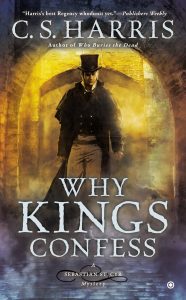 Escape Rating A-: I picked this up this week because yes, I was having a comfort read flail, and Sebastian St. Cyr always delivers – or rather whisks me away from my time to his. Which got me to thinking about the nature of comfort reads in general, and why this works for me in particular.
Escape Rating A-: I picked this up this week because yes, I was having a comfort read flail, and Sebastian St. Cyr always delivers – or rather whisks me away from my time to his. Which got me to thinking about the nature of comfort reads in general, and why this works for me in particular.
I had originally hoped this week that Blind Fear, being the third book in a series I’m definitely enjoying, would scratch some of that comfort read itch – but it didn’t – leading me straight to questions about why and why not.
What makes mysteries in general so much of a comfort is the romance of justice. If a story is a mystery and not purely a thriller, then it’s guaranteed that in the end the crime is solved, evil is punished and justice triumphs.
The Finn Thrillers have a mystery component, but they are exactly what it says on the label. They’re thrillers. At the end of the whole series, it seems highly probably that justice will triumph and evil will get its just desserts. But it hasn’t happened yet and doesn’t look like it’s happening any time soon. And in the meantime Finn is dealing with a lot of injustice, directed at himself as well as others, and wading all too frequently in some of the nastier cesspits of human behavior as he searches high and low – mostly low – for that justice.
In a historical mystery like the St. Cyr series, the historical setting adds to the comfort. Not that the past was any better, easier or safer than the present, but rather that its problems and its evils are not open-ended. We know what got solved or resolved, which situations improved and which are still plaguing the world today.
Not that justice writ large always triumphs in the St. Cyr series, but writ small it generally does. Even if the evils of the socioeconomic issues of the day are frequently appalling. Devlin and Hero attempt to do some good with the money and power they have, and often succeed if only a bit.
Bow Street may attempt to rush someone to judgment because it’s convenient for the high and mighty, but Devlin is always successful at standing in their way on that front, at least. The official story that gets into the papers may sweep things under the rug that shouldn’t be, and some of the rich and powerful escape the full range of justice they deserve, but no one is successfully railroaded to the hangman’s noose who hasn’t earned that punishment, at least not on Devlin’s watch.
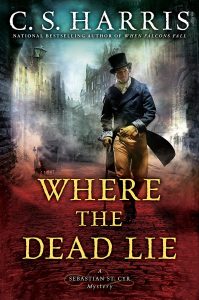 And that is most definitely a comfort to the reader. Or at least this reader.
And that is most definitely a comfort to the reader. Or at least this reader.
Who Buries the Dead was the penultimate title in my quest to catch up with the Sebastian St. Cyr series. I have one book left, Where the Dead Lie, and I’m pretty confident at this point that I’ll have that read long before the 19th entry in the series, What Cannot Be Said, gets said, done and published in April 2024.
After that, if I get desperate for a comfort read that is very like St. Cyr, I’ve got more of the Wrexford & Sloane series to look forward to. And I am!









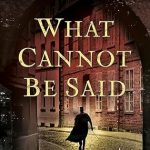
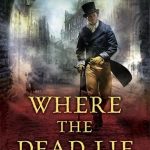








One thought on “Review: Who Buries the Dead by C.S. Harris”
Comments are closed.